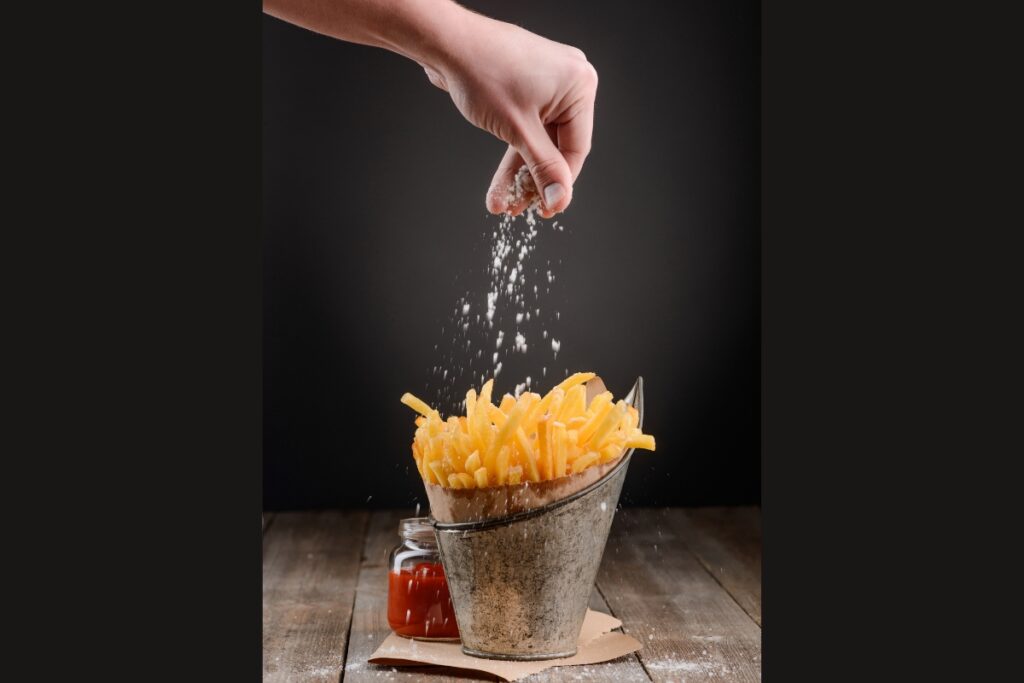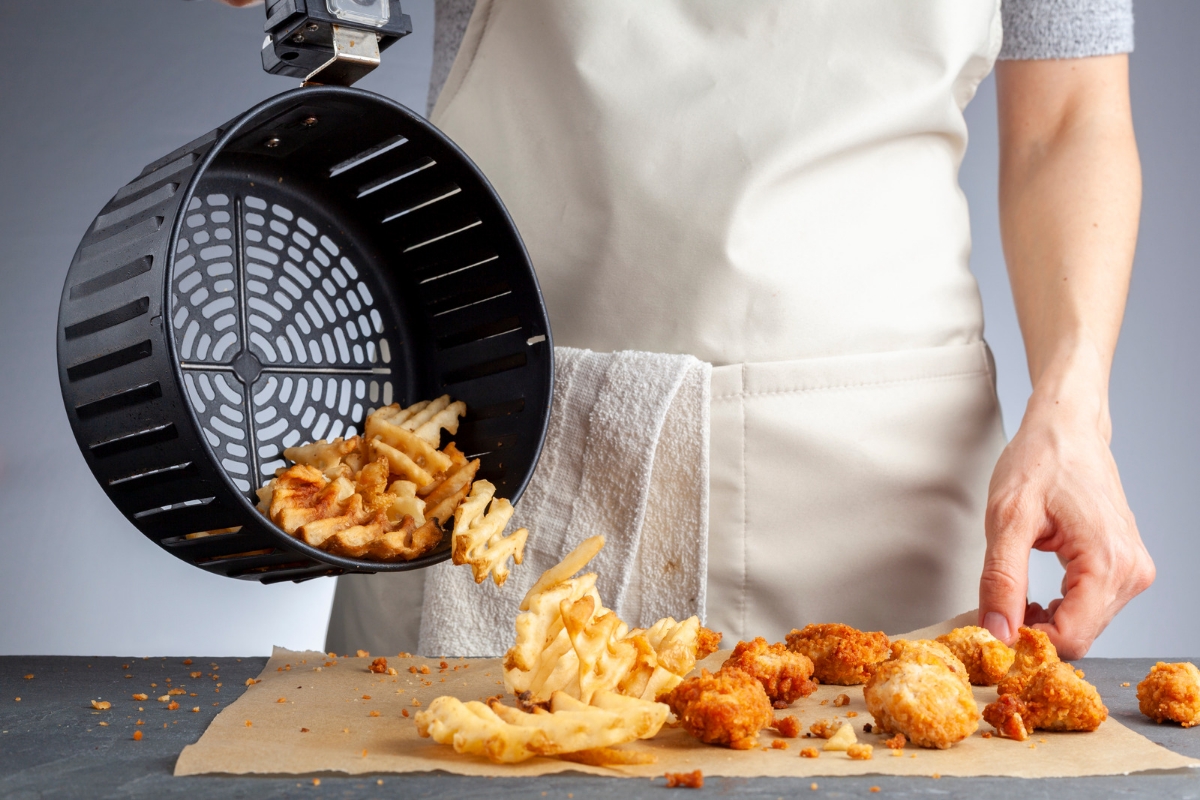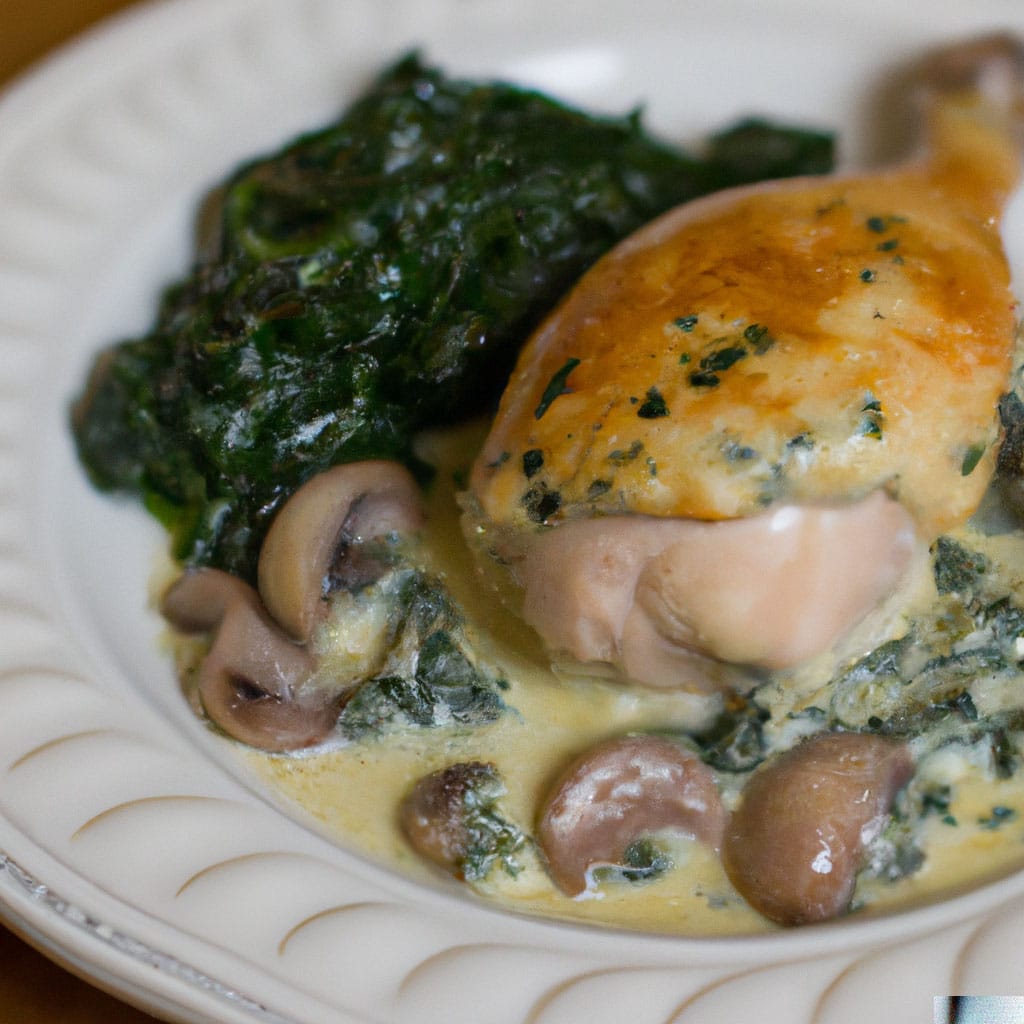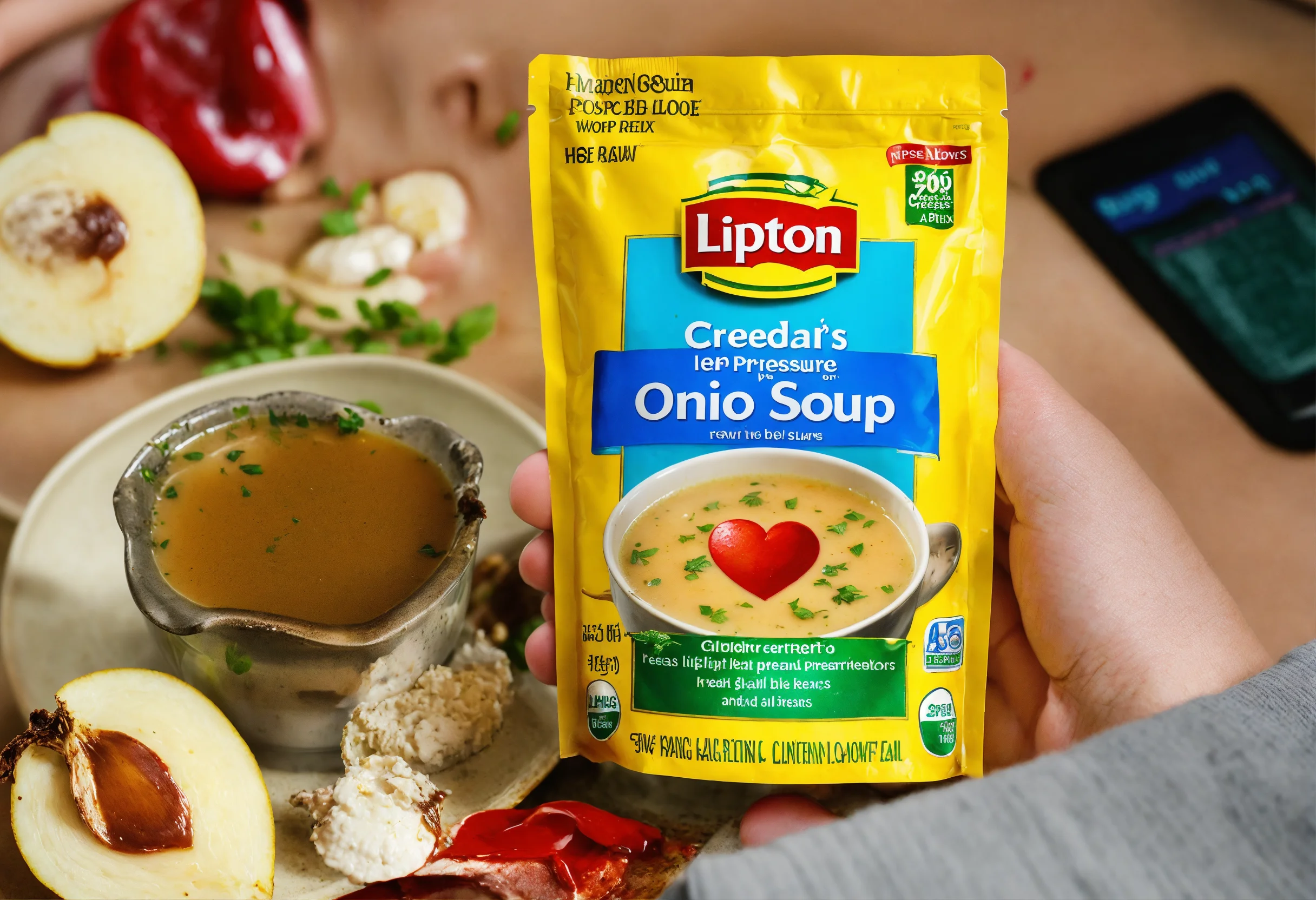Cooking frozen fries is an art form in its own right. It’s a culinary journey that takes you from the frosty realms of your freezer to the sizzling excitement of your frying pan or oven. In this comprehensive guide, we’re diving deep into the world of frozen fries. We’ll explore the secrets to achieving that perfect golden crispiness, the nuances of preparation, and the best practices for storage and cooking. Whether you’re a seasoned chef or a home cook, this article will equip you with all the tricks of the trade to elevate your frozen fry game. So, let’s get started on this crispy adventure!
Understanding the Basics of Frozen Fries Preparation
When it comes to cooking frozen fries, the devil is in the details. It’s not just about tossing them into a fryer or oven; it’s about understanding the dynamics of frozen food and how it reacts to heat. The journey to perfect fries begins with selecting the right type. From classic straight cuts to crinkle cuts, each variety has its unique characteristics and cooking requirements.
Why Cooking Frozen Fries Correctly Matters
Now, you might wonder, “Why fuss over frozen fries?” Well, it turns out, there’s a lot riding on getting them just right. Perfectly cooked fries are not only a treat to your taste buds but also a testament to your culinary skills. They should be crispy on the outside, fluffy on the inside, and just the right shade of golden brown. Achieving this balance is crucial, as it can make or break your dish. Moreover, cooking fries correctly ensures they retain their nutritional value and are safe to consume. So, let’s embark on this crispy journey and unlock the secrets to cooking frozen fries to perfection!
Preparing to Cook Frozen Fries
Moving on to the next crucial phase in our frozen fry odyssey, we’re going to tackle the art of selecting and storing these icy delights. This part is pivotal because, let’s face it, even the best cooking methods can’t salvage poorly chosen or stored fries. So, buckle up as we dive into the frosty world of frozen fries selection and storage!
Choosing the Right Frozen Fries for Your Meal
Selecting the right type of frozen fries is like picking the perfect pair of shoes – it needs to suit the occasion. Are you aiming for a quick snack or a gourmet side dish? The variety of frozen fries is vast, from the classic straight-cut to the more adventurous waffle or curly fries. Each type brings its unique texture and flavor to the table. For instance, thicker cuts like steak fries are perfect for a hearty meal, while shoestring fries are ideal for a light, crispy treat. Remember, the type of fry you choose can significantly influence the cooking time and method, so choose wisely! For creative ideas on incorporating frozen fries into various meals, check out these 15 ways to turn frozen fries into a perfect dinner.
Proper Storage Techniques for Frozen Fries
Now, onto storage. Properly storing frozen fries is crucial for maintaining their quality. Firstly, keep them in the freezer until you’re ready to cook. This might seem obvious, but it’s a common misstep. Freezing fries at a consistent temperature prevents ice crystals from forming, which can lead to soggy fries post-cooking. Also, avoid overcrowding your freezer; good air circulation is key to keeping your fries in top-notch condition.
In the next part, we’ll explore the various cooking methods for frozen fries. Whether you’re a fan of the traditional deep-frying approach or looking for healthier alternatives like baking or air-frying, we’ve got you covered. Plus, we’ll sneak in a special mention of “instant pot dutch oven recipes” for those who love to experiment with new cooking gadgets. Stay tuned for these golden tips!
Cooking Methods and Techniques
As we venture further into our frozen fries journey, it’s time to turn up the heat and dive into the various cooking methods. Each method brings its unique flair to the table, and knowing which one to choose can make all the difference. So, let’s get sizzling and explore these tantalizing techniques! Explore these four easy methods for frying frozen French fries for more insights into perfecting your fry-cooking technique.
Exploring Various Techniques to Cook Frozen Fries
When it comes to cooking frozen fries, you’ve got options aplenty. The traditionalists might lean towards deep-frying, a tried-and-true method that guarantees that satisfying crunch. For those seeking a healthier route, oven-baking offers a less oily alternative, still delivering on crispiness. Then there’s the modern marvel of air-frying, which has gained a legion of fans for its ability to produce crispy fries with minimal oil. Each method has its merits, so consider your taste preferences and health goals when choosing.
Oven-Baking vs. Deep-Frying Frozen Fries
Oven-baking is straightforward and less messy. Preheat your oven, spread the fries in a single layer on a baking sheet, and bake until they’re golden and crispy. On the flip side, deep-frying requires a bit more attention. Heat your oil to the right temperature, and fry the fries in batches until they’re golden brown. Remember, overcrowding the fryer can lead to uneven cooking, so patience is key.
In the next section, we’ll provide a step-by-step guide to cooking frozen fries perfectly. Whether you’re using an oven, fryer, or even trying out some instant pot dutch oven recipes, we’ve got the tips and tricks to ensure your fries come out just right. Stay tuned for these golden nuggets of wisdom!
Comprehensive Guide to Cooking Frozen Fries Perfectly
Mastering the art of cooking frozen fries is all about nailing the timing and temperature. Whether you’re a fan of the crispy, golden texture of deep-fried fries or the healthier, oven-baked version, following these steps will ensure your fries are cooked to perfection every time. For additional tips on cooking frozen fries using different methods, including air fryers, visit this comprehensive guide.
Timing and Temperature Control
1. Preheat Your Cooking Device: For oven-baking, preheat your oven to 425°F (220°C). If you’re deep-frying, heat the oil to 375°F (190°C). This initial high heat is crucial for achieving that desirable crispy exterior.
2. Prepare the Fries: While your oven or oil is heating, take the fries out of the freezer. If you’re oven-baking, spread them in a single layer on a baking sheet. For deep-frying, shake off any excess ice crystals to avoid oil splatter.
3. Cooking Time: Oven-baked fries typically take about 20-30 minutes. Turn them halfway through to ensure even cooking. In a deep fryer, they’ll take about 3-5 minutes. Avoid overcrowding the fryer; cook in batches if necessary.
4. Check for Doneness: You’re aiming for a golden-brown color and a crispy texture. If they aren’t quite there yet, give them a bit more time, but keep a close eye to avoid overcooking.
5. Drain and Serve: For deep-fried fries, drain them on paper towels to remove excess oil. For oven-baked fries, let them cool for a minute on the baking sheet. Serve hot for the best taste and texture.
Remember, consistency is key. Keeping a consistent temperature and cooking time will yield the best results. With these steps, you’ll be well on your way to serving up delicious, perfectly cooked frozen fries every time.
This link directs readers to a detailed guide on cooking frozen fries in an air fryer.
Post-Cooking Handling

After your frozen fries have danced in the heat and turned that perfect shade of golden brown, the next crucial step is handling and serving them. This stage is just as important as the cooking itself. Proper post-cooking handling ensures that your fries maintain their optimal quality – crispy on the outside, fluffy on the inside, and bursting with flavor.
Handling and Serving Cooked Frozen Fries
Once your fries are cooked to perfection, the way you handle and serve them can make a world of difference. Here are some tips to keep them in their prime condition:
Tips for Maintaining Crispiness and Flavor
1. Drain Excess Oil: For deep-fried fries, it’s essential to drain the excess oil as soon as they come out of the fryer. Lay them on a paper towel or a clean kitchen cloth for a few moments. This step prevents them from becoming greasy and soggy.
2. Avoid Steaming: If you’re piling your fries high, remember that steam can be the enemy of crispiness. Spread them out a bit when serving or storing to prevent them from steaming and getting mushy.
3. Serve Quickly: Fries are best served hot and fresh. The longer they sit, the more they lose their desirable texture. If you need to keep them warm for a short period, use a warming tray or a low oven, but try to avoid letting them sit for too long.
4. Seasoning at the Right Time: Salt and season your fries while they’re still hot. This ensures the seasonings stick better and distribute evenly. However, be mindful of the amount – nobody likes overly salty fries.
5. Presentation Matters: Finally, how you present your fries can enhance the eating experience. Serve them in a way that allows air circulation, like in a fry basket or on a serving platter, rather than squashing them into a bowl.
By following these tips, you’ll ensure that your cooked frozen fries are not just a side dish but a highlight of the meal. Crisp, flavorful, and perfectly golden – that’s the goal!
FAQs
Can You Cook Frozen Fries Without Thawing?
Absolutely! In fact, it’s recommended to cook your frozen fries straight from the freezer. Thawing them first can lead to a loss of that desirable crispiness, as excess moisture is released during the cooking process. So, next time, skip the thaw and go straight from freezer to fryer (or oven) for that perfect, crispy exterior.
How to Avoid Soggy Fries When Cooking?
Nobody likes a soggy fry. To avoid this, there are a few key tips to keep in mind. First, don’t overcrowd your cooking surface, be it the air fryer basket or oven tray. Overcrowding can cause steam to build up, which leads to sogginess. Also, ensure your cooking appliance is at the right temperature before adding the fries. This helps in achieving a quick sear, sealing in the crispiness. Lastly, give them space – spread the fries out evenly to allow hot air to circulate around each one, ensuring an even, crispy texture.
Nutritional Profile and Healthier Cooking Options for Frozen Fries
When indulging in the world of frozen fries, it’s wise to consider their nutritional impact. Typically, frozen fries are pre-cooked in oil, contributing to their fat and calorie content. However, the cooking method you choose at home can significantly affect their healthiness.
Air Fryer vs. Deep Fryer: A Health Perspective
The battle between air fryers and deep fryers is not just about taste and texture; it’s also a health debate. Air fryers have gained popularity as a healthier alternative, and for good reason. They require little to no additional oil, reducing the overall fat content of the fries. This method not only retains the desired crispiness but also makes them a more heart-friendly choice.
On the flip side, deep frying immerses the fries in oil, increasing their fat absorption. While this method might offer a more traditional taste and texture, it also boosts the calorie count. For those mindful of their fat intake or watching their calories, the air fryer is a clear winner.
In conclusion, the journey to cooking the perfect batch of frozen fries is filled with choices – from selecting the right cooking method to understanding the nuances of seasoning and health considerations. Whether you’re an air fryer aficionado or an oven-baking enthusiast, the key lies in embracing the method that suits your taste and lifestyle. Remember, the perfect fry is not just about the crunch; it’s about the joy and satisfaction it brings to your table.
As we’ve explored, each cooking method has its unique perks and pitfalls. The air fryer offers a healthier, yet equally crispy alternative, while traditional methods like deep frying and oven baking bring their own classic flavors. The choice ultimately boils down to personal preference and nutritional considerations.
So, the next time you find yourself standing in front of your freezer, bag of fries in hand, remember the tips and tricks from this guide. Embrace the process, experiment with different cooking styles, and most importantly, enjoy the delicious results. Happy frying!




